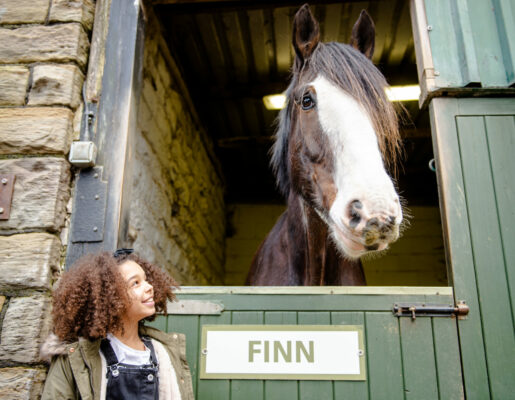Anglers Country Park
Located 4 miles south-east of Wakefield, Anglers Country Park is a perfect place to explore for nature lovers, walkers, dog walkers, cyclists, picnickers – and not forgetting tho...
For one mine in the Wakefield district, closure as a coal producing mine was the beginning of a new chapter. Caphouse Pit was closed in 1985 but in 1988 it opened the as the Yorkshire Mining Museum, becoming the National Coal Mining Museum in 1995. Today it offers a fascinating insight into the mining industry, including the opportunity to venture deep below the ground into the original pit workings.
Caphouse Pit was sunk in the late 18th century and for around 200 years, coal was brought up from the depths. The museum incorporates two other sites from the Denby Grange Colliery; the Hope Pit and the Inman Shaft. Visitors can move between the sites and the colliery buildings via nature trails or take a ride on the railway line running from the main reception of the museum to the Hope Pit. A reminder of the symbiotic relationship between these two giants – the rail and coal industries.

Steam Winding House at National Coal Mining Museum

Finn at National Coal Mining Musuem
Sir John Lister Lister-Kaye leased these and other pits in 1827. On his death in 1871, the management was taken over by the remarkable Miss Emma Lister Kaye. Emma was aged 46 when she became the boss and her main aim for the colliery was to modernise and improve production. She bought a twin cylinder steam winding engine from a woollen mill and set about developing the pit head buildings.
The Museum also brings to life the story of the animals who worked underground to bring the precious coal to the surface. In 1913 there were thought to be as many as 70,000 ponies working across the mines in England. Today at the museum you can learn more about the remarkable role these animals played in the industry’s history and you can meet real life residents in the Stable Yard in the form of Fin, Bud, Eric and Ernie!
A visit is not complete without the underground adventure – a unique experience. Take the cage down the oldest mine shaft still in continuous use and follow in the footsteps of generations of men, women and children. 140m beneath the ground, ex-miners will skilfully guide you through the narrow, other-worldly passages, travelling through time and history, but also exploring the human side of this vital industry. It really is an experience like no other.
As you return from below, just as the miners would have emerged into the light, you can see the winding wheel as a welcome back to ground level from the depths. This winding wheel is a very special timber one – a survivor from before 1911. From that date onwards, laws dictated all the headstocks were made of metal. Incredibly, this one survived. 3m in diameter and made of pitch pine, the wheel, at least a 110 years old, would, at many times in its history, have held the lives of miners as they descended the into the earth.
Recently restored, the Caphouse Pit Wheel tops the tower and overlooks the site. A rare reminder of the landscape as it would have been just a handful of decades ago. Many of the villages and towns in the Wakefield district now proudly display a pit wheel – once mighty pieces of machinery, now monuments and memorials to those who came before us and poignant reminder of what lies beneath the ground.